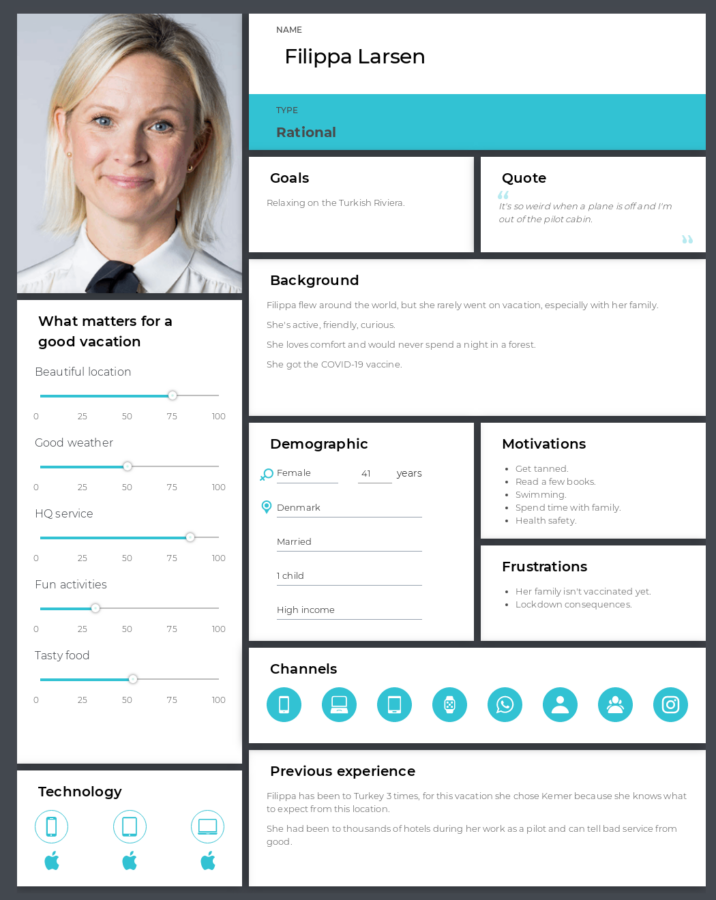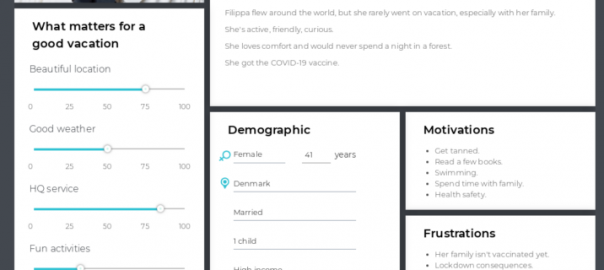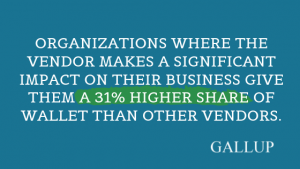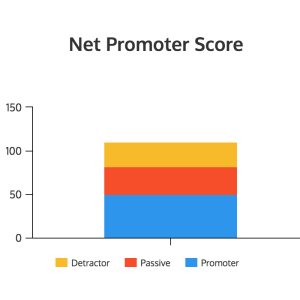The success of a company depends on its team. 92% of U.S. employees confess that their collaboration at work can be changed for the better. If you want your workers to hit your goals, make sure they’re well aware of your expectations. In other words, bring everyone on the same page.
We know it can be an uphill climb, and that’s what you can do!
Way 1. Let your team “feel and touch” your customer
You can build up a customer experience (CX) department or a think tank, depending on your company size. This group will create the customer persona, a fictional character representing a specific customer segment based on certain criteria, and dive deeper to visualize the persona’s journey. Then, they will streamline the data to the work fellows, making it ready to digest as a printed paper, link, or you name it. Once you have it, you can improve it.
Developing a persona and the customer journey map upon it helps you to see the gaps in CX. The persona and the buying journey guide your teammates as an on-the-spot reference. They feel, analyze, and inclusively enhance the CX from the problem statement to the post-acquisition stage. Every member can relate to a Jane or a Mike that are ecstatic with their experience or disappointed (touch the wood!) and urge for a refund. Empathizing with the customer, your people get emotionally rewarded when they accelerate your service or product. Your team grows in with their mission.

- Source: UXPressia’s templates
Have we missed out on something? With all said, the developed persona and customer journey map make onboarding less time-consuming. Newcomers navigate themselves quicker to arrive at the same page with the team. You might even consider it more effective to align new employees with the rest during the induction period, rather than wait and see how they carry on.
This way, everybody gets in the loop. You have the perks of laid-on-the-line collaboration and more hearts on media, tweets, words of mouth, and repeat purchases.
Way 2. Get ‘em involved in planning
Your colleagues are the key for a project to bloom. It’s vital to direct and involve them, say, in the quarterly planning. As a leader, you strategize for the long run and hold the steer tight, but your employees might see the burning spots that get in the way and need immediate attention.
What’s more, if you do take the trouble and map out the customer journey, it’s so much easier to generate insights altogether. Different employees are engaged with CX on a different level and will spit out awesome ideas.
Say, you’re a manager of a coffee shop. You struggle to get the loyalty program spinning. You’re filled with night wonders “I got that loft cozy vibe. I drove the hard bargain for the best coffee beans. Why no forms on the web?”.
And then, your barista spells the bins, “Customers have to make this extra effort to register on the site. Let me do it. It sounds fun getting to know people in the shop.”
Talking and planning with your teammates can give you quick wins versus long-term propositions for the upcoming year.
Way 3: Document all in one place
Now, a few tricky terms. You might have heard of data silos. It’s in place when data used by one part of the team is hardly accessible by the other. It happens with a young or grown-up organization. The company’s maturing, the data’s growing, and the snowball effect kicks off.
To avoid that, check out with your IT specialist. It might be a matter of software or user permissions roles. Any new software should be compatible with the one you have. This way, you can prioritize your goals, set objectives, study CX, build a knowledge base, and guide your employees in one place.
This smoothly hints us at Ways 4 and 5.
Way 4: Equip your team with software
There are a few tools in the market to ease your collaboration with your workmates. They’re good for task tracking, project managing, delegating cases, customer relationship management, calendar and email sync. Slack, Trello, Jira, Confluence, Salesforce, Semrush, Asana, G Suite, etc. are a part of our times.
At the same time, the number of distributed workers increases. For example, the number of remote positions in the digital space has grown from 13% in 2011 to 75% in 2021. With the pandemic, collaboration tools appear even more acute to use remotely. Whatever the situation requires, such tools let you and your team (or at least some of its part) seamlessly slide to home offices.
Way 5: Rule the workflow and you embrace the world
We all love creativity and carte blanche, but nobody’s fond of chaos or its consequences. If your company is managing without a workflow, that’s fantastic! You’re a genius and you should write a book on how to.
However, some companies could benefit from getting the task manager on track. And if it’s your case, task manager apps will help you automate individual to-do lists and repeating tasks, watch for deadlines, projects’ ups and downs, patterns, and failures. It’s not about telling somebody off or finger-pointing, but about being proactive and detecting white spaces in time.
Such apps will cue your workmates to get friends with S.M.A.R.T. goals. It might be painful but you’ll see your team on point. They’ll obtain valuable skills to invest in their work.
Way 6: Arrange quarterly meetings aka town halls
Stay tuned for meetups, workshops, internal talks and conferences, and any agenda-focused gatherings. Quarterly stops for in-person communication will allow your people to befriend, share ideas and plans, offer and ask for help from experienced colleagues. All for the common good!
Whatever ways you pick to get your team on the same page, put your buying persona first: their expectations, touchpoints with your product or service, and interactions with your company. It all matters on the way to a happy client. Don’t forget to keep your team on the same page with your customers as well. The latter will pay you back immensely with their loyalty, heaps of recommendations, and posts on social media.
Business & Finance Articles on Business 2 Community
(26)
Report Post










